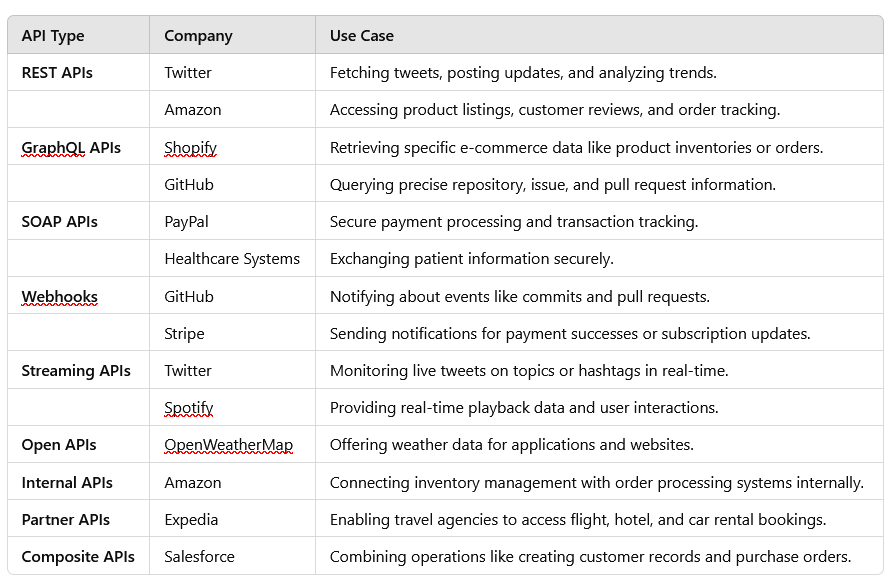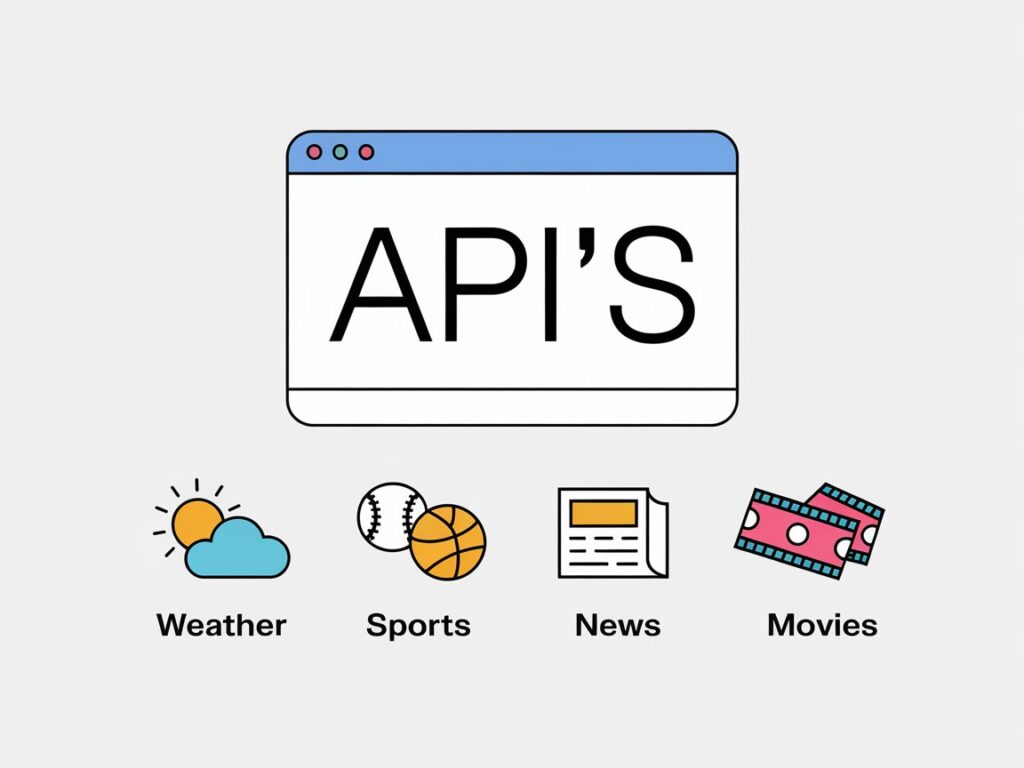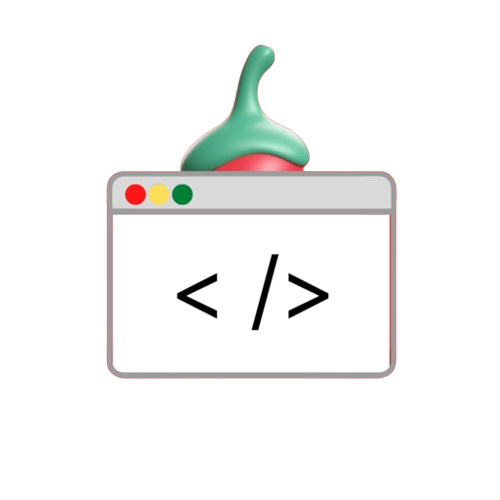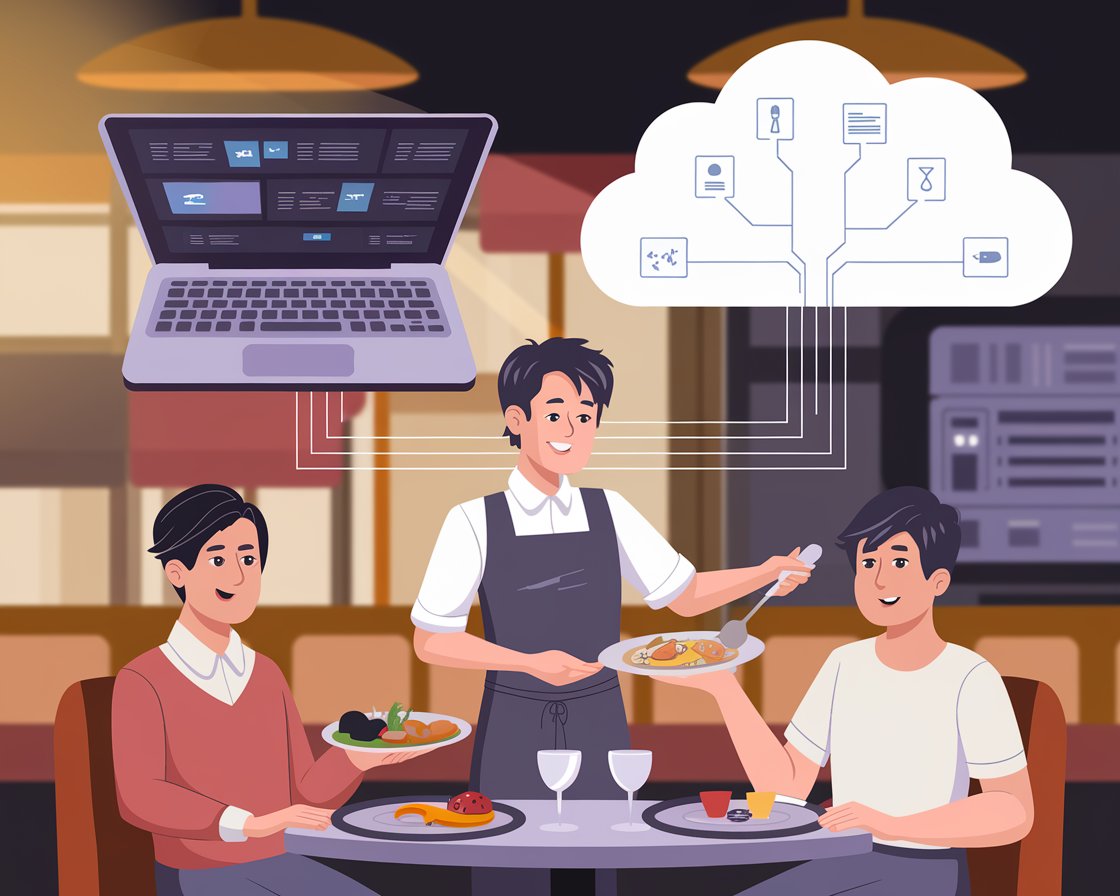Imagine APIs as waiters in a restaurant. When you, as the customer (your application), tell the waiter (the API) what you want (data or functionality), the waiter takes your request to the kitchen (the server). The kitchen processes the request, prepares the dish (the requested data), and the waiter brings it back to you.
In essence, API, or Application Programming Interface, are like a set of rules and protocols that enable different software applications to communicate and share information effortlessly. They are the backbone of modern software development, fostering interoperability and driving innovation on an unprecedented scale. Let’s explore this foundational concept further.
Table Of Contents
Key Concepts
Endpoints
Endpoints are specific URLs within an API that serve as access points for its various functionalities. For example, a weather service API might have an endpoint like /weather/current to fetch the current weather data. These endpoints are designed to make APIs intuitive and easy to use, acting as gateways to the services they provide.
Requests & Responses
An API function through a request-response cycle. Applications send requests to API endpoints, and the API processes these requests, returning responses with the requested data. These responses are typically formatted in data interchange formats like JSON or XML, making it simple for applications to parse and utilize the data.
For instance, in the context of an e-commerce API, you might send a request to the /products/list endpoint to get a list of available products. The API would respond with the product data in JSON format, ready to be displayed or further processed as needed.
Types of APIs

REST APIs:
Representational State Transfer (REST) API is among the most widely used types of APIs. They operate using standard HTTP methods like GET, POST, PUT, and DELETE to manage resources. REST APIs are valued for their simplicity, scalability, and stateless design, which ensures each request is independent and doesn’t rely on stored server data. Typically, they use JSON for data formatting, making them lightweight and user-friendly.
Example: Major companies like Twitter and Facebook provide REST API that enable developers to integrate features such as retrieving social media posts or uploading images. Similarly, e-commerce platforms like Amazon offer REST APIs for accessing product listings, customer reviews, and order tracking, empowering developers to build seamless integrations.
GraphQL APIs
GraphQL APIs provide a highly flexible approach to data fetching. Instead of retrieving fixed data structures, clients can request precisely the data they need, eliminating issues of over-fetching or under-fetching. For example, with a GraphQL API, you can request only specific fields from a user profile, such as their name and email, without retrieving unrelated data like their address.
Example: Shopify utilizes GraphQL API to allow developers to fetch only the e-commerce data they need, such as product inventories or customer details. Similarly, GitHub’s GraphQL API enables developers to query precise information about repositories, issues, or pull requests, offering efficiency and customization.
SOAP APIs
Simple Object Access Protocol (SOAP) APIs represent an older, more rigid standard for communication. They rely on XML for message formatting and are often used in enterprise scenarios requiring strict security and transactional reliability. While less common in modern development, SOAP APIs remain integral in industries like finance and healthcare.
Example: Financial services like PayPal and banks use the SOAP API for secure payment processing and transaction tracking. In healthcare, SOAP APIs are often employed to securely exchange patient data between systems, ensuring compliance with strict privacy standards.
Webhooks
Webhooks are event-driven API, that push data to applications as soon as specific events occur, enabling real-time updates. Unlike traditional ones, which require constant polling for data, webhooks deliver information immediately when it’s available.
Example: GitHub uses webhooks to notify external applications about events like code commits, pull requests, or issue updates, facilitating seamless CI/CD workflows. Similarly, Stripe employs webhooks to inform merchants about payment successes, refunds, or subscription changes, enhancing responsiveness and automation.
Streaming APIs
Streaming APIs provide real-time, continuous data streams, making them ideal for applications that require instant updates. Instead of repeatedly polling for data, applications can receive new information as soon as it becomes available. This approach is particularly valuable for use cases like stock market tracking, live sports updates, or social media monitoring.
Example: Twitter’s Streaming API allows developers to monitor live tweets on specific topics or hashtags in real time, making it a key tool for social media monitoring solutions. Similarly, platforms like Spotify use streaming APIs to provide real-time playback data and track user interactions seamlessly.
Other API Types
Open APIs
Open APIs, also known as public API, are available to anyone, encouraging third-party developers to build integrations with the platform. They promote innovation by allowing external developers to enhance the ecosystem around a service or product.
Example: OpenWeatherMap offers an open API for weather data, widely used by app developers and websites to provide weather updates and forecasts.
Internal API
Internal APIs are designed for use within an organization to streamline operations and improve integration between internal systems. Unlike open APIs, they are not accessible to external developers.
Example: A company like Amazon might use internal APIs to connect its inventory management system with its order processing system, ensuring efficient operations and better internal communication.
Partner API
Partner APIs are shared with specific business partners to facilitate collaboration and enhance service offerings.
Example: Expedia provides partner APIs for travel agencies to access booking systems for flights, hotels, and car rentals.
Composite API
Composite APIs allow developers to combine multiple APIs into a single call which improves efficiency and simplify workflows.
Example: Salesforce uses composite APIs to enable developers to perform multiple operations, such as creating a customer record and adding a purchase order, in a single API call.
Benefits of Using APIs

Efficiency
APIs save developers time and effort by enabling the reuse of existing functionalities and data. Instead of building features from scratch, developers can seamlessly integrate pre-built services. For instance, rather than creating a payment system from the ground up, developers can use APIs from providers like PayPal or Stripe, accelerating development timelines.
Innovation
APIs foster innovation by allowing developers to build on top of existing platforms and services. This collaboration opens the door to creating new applications that leverage the capabilities of established systems. For example, apps like Uber integrate API for maps, payments, and communication to deliver a cohesive and intuitive user experience.
Enhanced User Experience
By integrating diverse services through the API, developers can craft applications that offer a seamless and engaging user experience. Features like social media logins, chat systems, or location-based services improve usability and satisfaction, making APIs essential for building modern, feature-rich applications.
Scalability and Modularity
An API support scalability by enabling applications to interact with cloud services and external platforms. This modular approach allows developers to focus on creating unique features while relying on APIs to handle foundational functionalities, ensuring efficient growth and adaptability.
Examples of APIs in Action

Google Maps API
The Google Maps API enables developers to embed maps, access location data, and implement routing features in their applications. It’s a cornerstone for navigation apps and location-based services. For example, ride-hailing apps and food delivery platforms rely heavily on this API to offer precise directions and seamless user experiences.
Twitter API
The Twitter API allows developers to fetch tweets, post updates, and analyze trends, making it a powerful tool for social media integration and analytics. Businesses use this API to monitor brand mentions, track customer sentiment, or execute social media campaigns effectively.
Payment Gateway APIs
Payment gateway APIs, such as Stripe or PayPal, streamline online payment processing, ensuring secure and efficient transactions. These often include advanced features like recurring billing and fraud detection, making them indispensable for e-commerce platforms and subscription-based services.
Weather APIs
A Weather API like OpenWeatherMap provide real-time weather data and forecasts. Developers integrate these APIs into apps for travel, agriculture, or even smart home devices, offering users personalized and timely weather updates.
Challenges When Working with APIs
Security Concerns:
Securing API is essential to prevent unauthorized access and safeguard sensitive data. Developers must implement robust authentication mechanisms like API keys and OAuth to ensure data privacy and protect against potential breaches.
Rate Limits:
Many of the API enforce rate limits to manage excessive usage and maintain system performance. This can be challenging for high–traffic applications, requiring developers to design their systems to handle these constraints effectively, such as by implementing request queuing or retry mechanisms.
Compatibility and Maintenance:
As APIs are updated and older versions become deprecated, developers must regularly update their integrations to maintain compatibility. While this ongoing maintenance can be time-intensive, it is essential for ensuring the application continues to function smoothly without disruptions.
Conclusion
API is a cornerstone of modern software development, enabling applications to communicate, share data, and offer powerful functionalities. They drive efficiency, innovation, and improved user experiences. For developers, understanding and utilizing APIs is a critical skill that opens doors to endless possibilities.
Explore further by experimenting with APIs in your own projects. Start small, make your first API call, and watch as your applications come to life with the power of APIs. The more you practice, the more you’ll uncover the vast potential of APIs in shaping the digital world.




